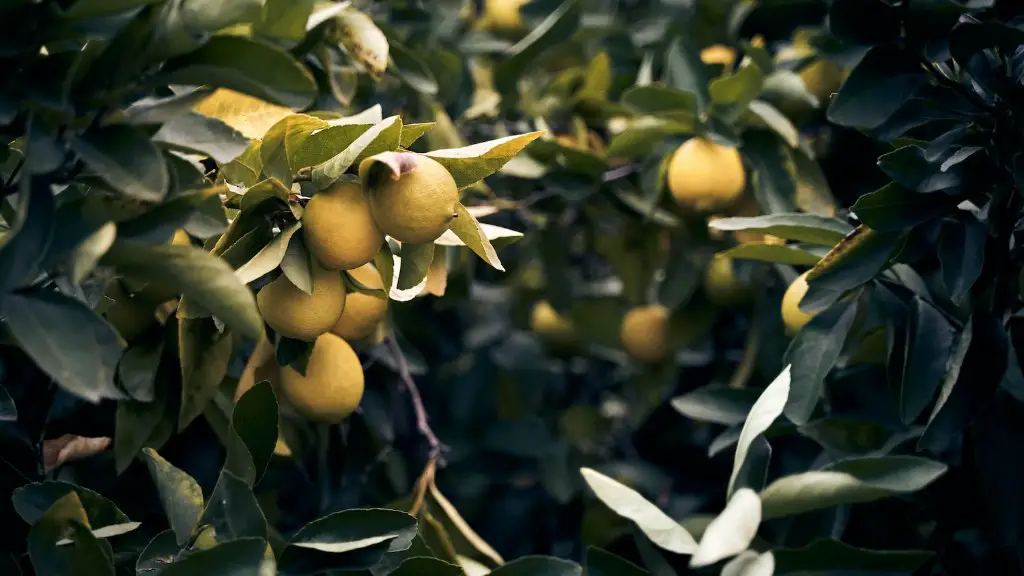Required Materials
Making a fake palm tree involves gathering the supplies you need, ranging from foam to burlap to tools. In order to create a sturdy and realistic looking artificial tree, you need to have the correct materials at your disposal.
Foam is the primary material for this project. The foam gives weight and definition to the tree, and needs to be cut and shaped to look like a real tree. Make sure to purchase foam that is suitable for outdoor use, as it will be exposed to the elements. You may also find that aquarium foam is a suitable alternative to regular foam, and is often cheaper.
You will also need to purchase burlap cloth or fabric. This will be used to simulate a palm tree’s rough bark, and should be the same color as the foam used to make the trunk. You may also wish to purchase a canvas or plastic drop cloth to use as a liner in case the burlap is not thick enough to adequately protect the foam from the elements.
Other tools you will need for this project include an electric carving tool, a ruler, scissors, glue and an adhesive such as Liquid Nails. Finally, you should also purchase some plastic foliage. This will be used to give the tree its leafy fronds, and should be chosen to match the type of tree you are creating (whether it is a date palm, a coconut palm, etc.).
Making the Trunk
The first step in making the trunk is to cut the foam into the desired shape. To do this, you will need your ruler and electric carving tool. Decide how long and wide you want the trunk to be, and use the ruler to measure the foam. Use the carving tool to cut the foam into the right shape. Make sure that you do not make the trunk too thin, or it will not be sturdy enough to withstand the elements.
Once you have the trunk cut to size, you will need to sand it down. Use a fine-grit sandpaper to make sure that you have a nice smooth finish. Additionally, use some glue and Liquid Nails to give additional strength to the edges of the trunk, as this will make it last longer.
Creating the Bark Texture
Now that you have cut and sanded the trunk, you will need to create the bark texture. To do this, take the burlap cloth and begin to wrap it around the trunk, starting at the base. You can use some glue to help secure the fabric in place, but also make sure that there is enough material to give the trunk a rounded texture.
As you work your way up the trunk, tuck the burlap under the next layer so that it looks like it is growing. Keep in mind that real tree bark grows in various shapes and sizes, so create an uneven texture to make it look more realistic.
Finishing Touches
Now that the trunk is made and the bark texture is in place, you can start to add the foliage to the palm tree. Take your plastic foliage and begin to attach it to the top of the trunk. If you want to make the tree look more life-like, you can glue some real leaves to the tree alongside the plastic ones.
Once the foliage is in place, you may want to paint the trunk or leaves to give it some color. Make sure to use an outdoor-grade paint so that it can withstand the weather. Additionally, you may want to spray the tree with an outdoor-grade sealant to add some protection against the elements.
Attaching the Tree to Its Base
The next step is to attach the tree to its base. This can be done using a wooden dowel, or a metal U-shaped bracket. Make sure that the dowel or bracket is attached securely, as it will need to support the weight of the tree.
Once the dowel or bracket is in place, use some Liquid Nails to secure it to the ground. This will ensure that the tree is sturdy and will not topple over. If necessary, you may want to add some additional weight to the base of the tree in order to make it even sturdier.
Caring for Your Fake Palm Tree
Caring for your artificial palm tree is just as important as creating it. Make sure to check the tree regularly for any signs of damage due to weathering or other factors. If the tree does start to get waterlogged or damaged, you should consider repainting it in order to restore its appearance.
Additionally, make sure to take the tree indoors during periods of extreme weather. This will help to preserve the life of the tree and make sure that it looks its best.
Making it Realistic
To really make the tree look realistic, you can add some additional elements to the project. For instance, you can add some pieces of bark and other items to the tree in order to make it look more like a real palm tree. Additionally, you can also fill in gaps in the trunk with some wood filler to give it a more natural texture.
Finally, you may want to add some additional foliage to make the tree look even more life-like. This could include real or artificial vines, or even some plastic palm leaves.
Helping the Tree Survive the Elements
Making sure that the tree will be able to withstand the elements is essential for ensuring that it remains in good condition for years to come. Start by applying multiple coats of outdoor-grade paint to both the trunk and the foliage. This will help protect the tree from rain, snow and heat, as well as from strong winds.
Additionally, make sure that the tree is situated in an area where it will be adequately sheltered from these elements. If the tree is placed in an exposed area, you may need to take additional steps to make sure that it can withstand the wind and other weather conditions.
Securely Fastening the Tree Into Place
Once you have secured the tree in its desired location, you will need to fasten it into place. To do this effectively, use a combination of screws and stakes. Make sure to use screws that are appropriate for outdoor use and are long enough to securely fasten the tree into place. Additionally, the stakes should be long enough to penetrate the ground and hold the tree securely in place.
Safety Considerations
When making a fake palm tree outdoors, there are a few safety considerations to take into account. Make sure to wear protective gear such as gloves, goggles and a face mask when using your electric carving tool and glue. Additionally, make sure to keep a fire extinguisher on hand in case there is a fire caused by the tools or glue.

